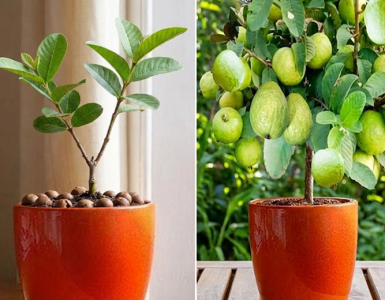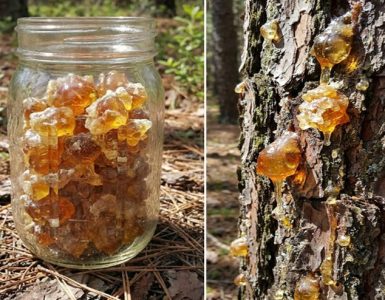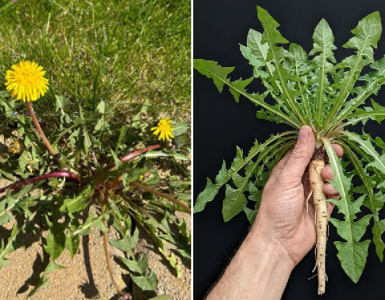Cape gooseberries, also known as Physalis peruviana, goldenberries, or ground cherries, are delightful little fruits with a sweet and tangy flavor. Growing these exotic treats from seeds indoors can be a rewarding experience, offering a fresh supply of nutritious berries right from the comfort of your home. Whether you’re a seasoned gardener or a beginner with a green thumb, here’s a comprehensive guide on how to grow Cape gooseberries from seeds indoors.
Understanding Cape Gooseberries:
Before diving into the growing process, it’s essential to understand the plant you’ll be cultivating. Cape gooseberries are native to South America and belong to the nightshade family. They are relatively easy to grow and can thrive in containers, making them ideal for indoor cultivation. These plants typically reach a height of 2 to 3 feet and produce small, lantern-like fruits encased in papery husks.
What You’ll Need:
Cape Gooseberry Seeds: Obtain high-quality seeds from a reputable supplier or harvest them from ripe fruits.
Potting Mix: Opt for a well-draining potting mix rich in organic matter.
Containers: Choose containers with drainage holes to prevent waterlogging.
Light Source: Place your seedlings in a location where they’ll receive ample sunlight or use grow lights.
Watering Can: Ensure a steady supply of water to keep the soil evenly moist.
Fertilizer: Use a balanced fertilizer to provide essential nutrients during the growing season.
Step-by-Step Guide:
Seed Starting: Start by filling your containers with moist potting mix. Plant the Cape gooseberry seeds about ¼ inch deep and cover them lightly with soil. Water gently to settle the soil.
Placement: Place the containers in a warm, sunny spot indoors. Cape gooseberries require at least 6 to 8 hours of sunlight daily. If natural light is insufficient, supplement with grow lights to ensure healthy growth.
Watering: Keep the soil consistently moist but not waterlogged. Avoid overwatering, as it can lead to root rot. Check the moisture level regularly and water as needed.
Fertilization: Once the seedlings have established true leaves, begin fertilizing them with a balanced fertilizer. Follow the manufacturer’s instructions for application rates and frequency.
Transplanting: When the seedlings have grown to about 6 inches tall and have several sets of leaves, they are ready for transplanting into larger containers or the garden if outdoor conditions permit. Choose a well-drained location with full sun exposure.
Support and Pruning: As the plants grow, provide support such as stakes or cages to prevent them from toppling over under the weight of fruits. Prune any yellowing or dead leaves to promote air circulation and reduce the risk of disease.
Harvesting: Cape gooseberries typically mature 70 to 80 days after planting. Harvest the fruits when they turn golden yellow and the husks become dry and papery. Simply pluck them from the plant and remove the husks before enjoying the juicy berries.
Tips for Success:
Temperature: Cape gooseberries thrive in temperatures between 65°F and 70°F (18°C to 21°C). Avoid exposing them to temperatures below 50°F (10°C), as it can stunt growth.
Pest and Disease Control: Keep an eye out for common pests such as aphids and whiteflies. Use organic pest control methods or insecticidal soap to manage infestations. Prevent fungal diseases by providing adequate air circulation and avoiding overhead watering.
Continuous Harvest: To prolong the harvest season, stagger your plantings or grow multiple plants at different stages of growth. This ensures a continuous supply of fresh Cape gooseberries throughout the growing season.
By following these steps and tips, you can successfully grow Cape gooseberries from seeds indoors, allowing you to enjoy the delicious fruits of your labor year-round. Happy gardening!
Cape gooseberries, also known as Physalis peruviana or golden berries, are small, round fruits encased in a papery husk. They are not only delicious but also packed with nutrients and health benefits. Here’s a closer look at the various advantages of including cape gooseberries in your diet.
1. Rich in Nutrients
Cape gooseberries are a good source of essential vitamins and minerals. They contain:
- Vitamin C: Boosts the immune system, helps in the absorption of iron, and promotes healthy skin.
- Vitamin A: Supports vision health, immune function, and skin health.
- Fiber: Aids in digestion and promotes a healthy gut.
- B Vitamins: Including thiamine, riboflavin, and niacin, which help convert food into energy.
2. Antioxidant Properties
Cape gooseberries are rich in antioxidants, such as polyphenols and carotenoids. These compounds help protect your cells from oxidative stress and damage caused by free radicals, potentially reducing the risk of chronic diseases like cancer and heart disease.
3. Anti-Inflammatory Effects
The antioxidants and other bioactive compounds in cape gooseberries have anti-inflammatory properties. Regular consumption may help reduce inflammation in the body, which is linked to various chronic conditions, including arthritis and heart disease.
4. Boosts Immune System
High in vitamin C and other antioxidants, cape gooseberries can enhance your immune system, helping your body fight off infections and illnesses more effectively.
5. Supports Eye Health
The vitamin A and carotenoids present in cape gooseberries are essential for maintaining good vision and eye health. They help protect against conditions like age-related macular degeneration and cataracts.
6. Promotes Healthy Skin
Vitamin C and other antioxidants in cape gooseberries contribute to healthy skin by promoting collagen production, reducing wrinkles, and protecting against sun damage.
7. May Aid Weight Loss
Cape gooseberries are low in calories but high in fiber, which can help you feel full and satisfied. Incorporating them into your diet can aid in weight management by reducing overall calorie intake.
8. Regulates Blood Sugar Levels
The fiber content in cape gooseberries helps slow down the absorption of sugar in the bloodstream, which can help regulate blood sugar levels and prevent spikes, making them beneficial for individuals with diabetes or those at risk.
9. Improves Digestive Health
The dietary fiber in cape gooseberries promotes healthy digestion by adding bulk to the stool and supporting regular bowel movements. This can help prevent constipation and promote a healthy digestive system.






Add comment